Fausto Bellino Tasca
San Diego, California
Our Lady of the Rosary Catholic Church The parish church located near the corner of State and Date Streets in San Diego’s Little Italy is affectionately known as The Church of the Fishermen. The church was the vision of Father Rabagliati. As an immigrant, he understood that the Italian fishermen of his parish wanted to have a beautiful church that would remind them of their beloved homeland. Father Rabagliati worked with the Italians of his community and with the diocese to bring this dream to life. The community rallied together and collected enough money to build and decorate their church.
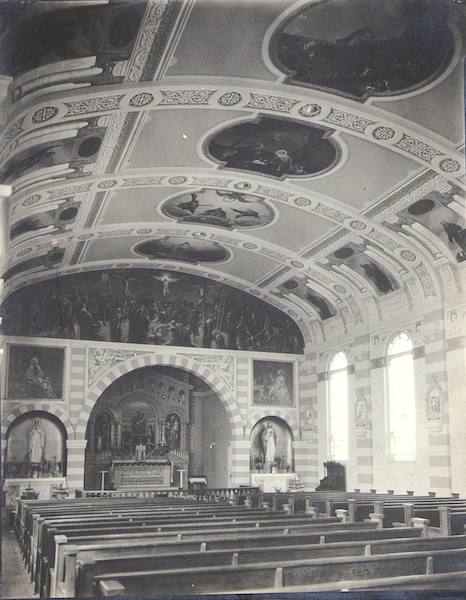
Interior photograph, 1925
Fitch Photography of San Diego
The construction of the church began on August 17, 1923 and most of the work was completed in time for the church to be blessed on Christmas Eve 1923.
Fausto Tasca won the commission to decorate the entire interior of the church. His plan was ambitious. It included two huge murals, several ceiling medallions, and grisailles of cherubs and angels.
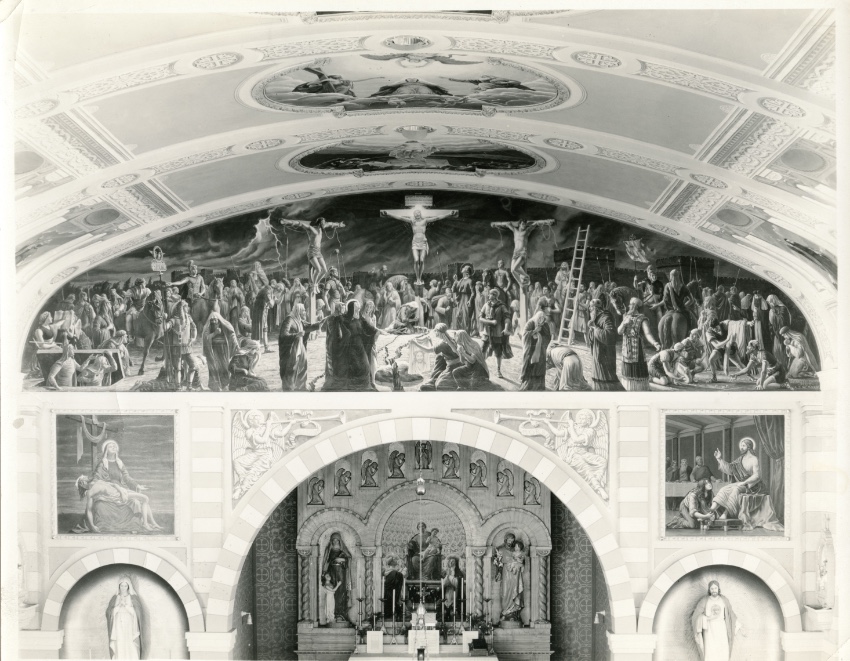
Main altar showing ceiling medallions
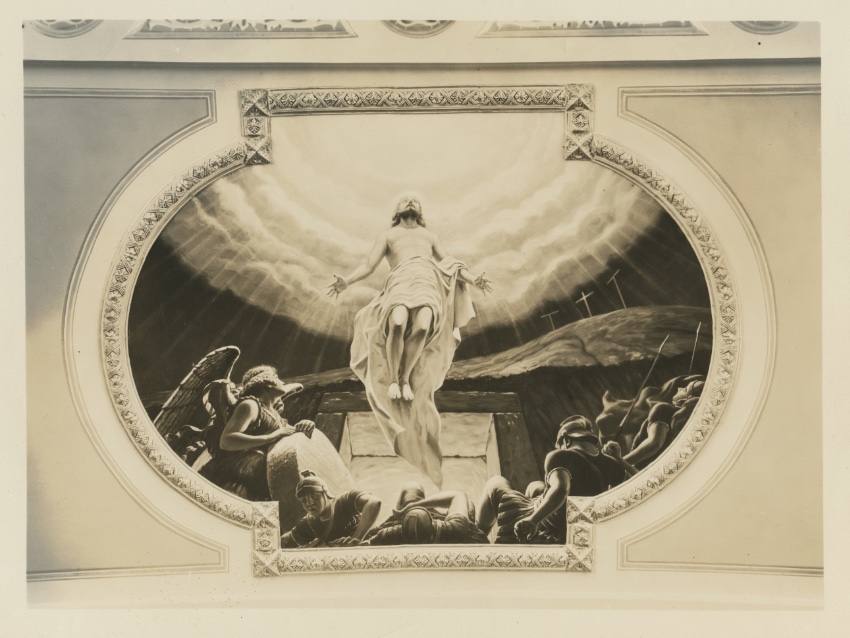
Ceiling Medallion
The Resurrection
First Glorious Mystery
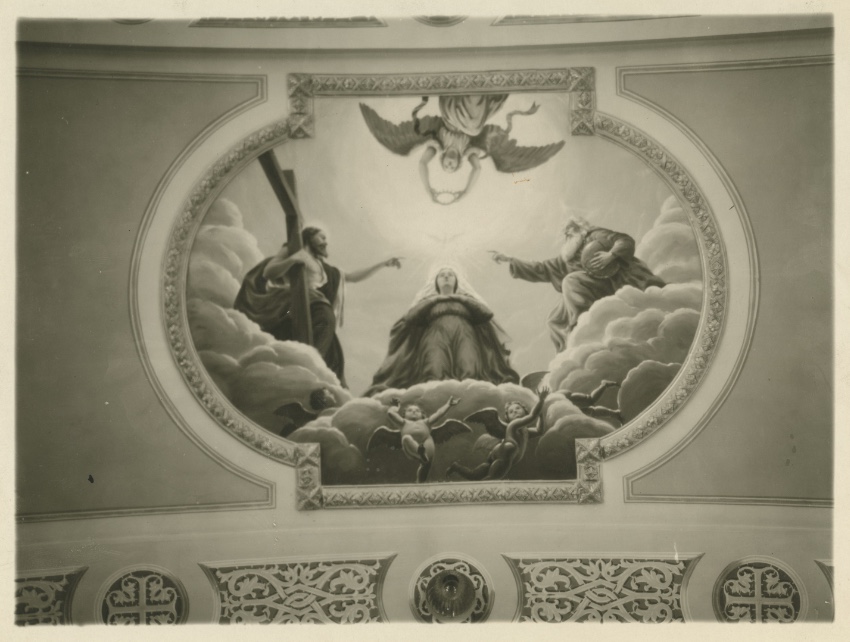
Ceiling Medallion
The Crowning of Our Lady Queen of Heaven
Fifth Glorious Mystery

Ceiling Medallion
The Birth of Our Lord
Third Joyful Mystery

Ceiling Medallion
The Presentation in the Temple
Fourth Joyful Mystery
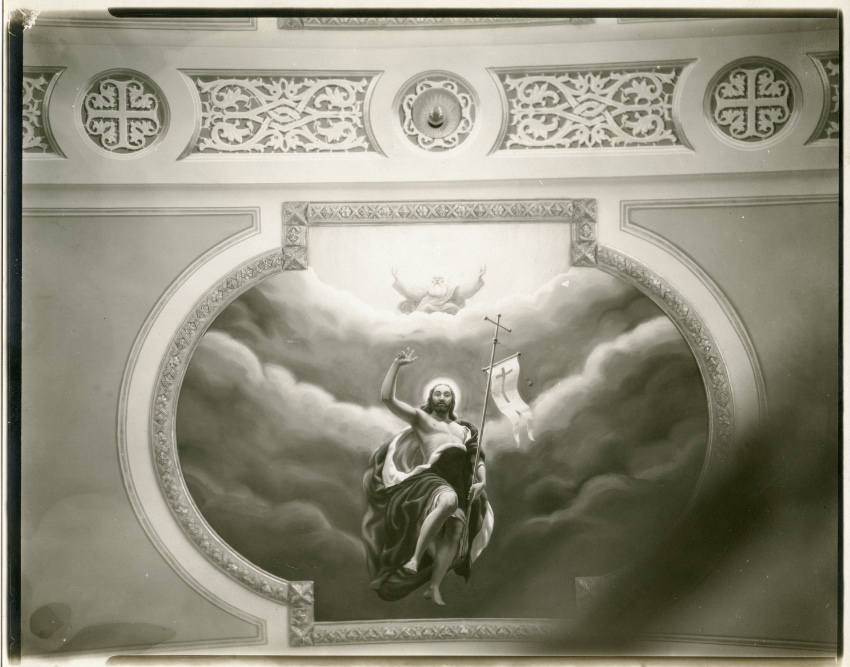
Ceiling Medallion
The Ascension
Second Glorious Mystery
It also included the design and execution of all the stained glass windows in the church. To honor Father Rabagliati, Fausto Tasca included a portrait of him, together with a miniature of Our Lady of the Rosary, in the Last Judgement mural installed on the rear wall of the Church. In spite of the enormous amount of work needed to complete the decoration of the church, Fausto completed all the work in time for the church dedication on November 15, 1925 — in under two years.
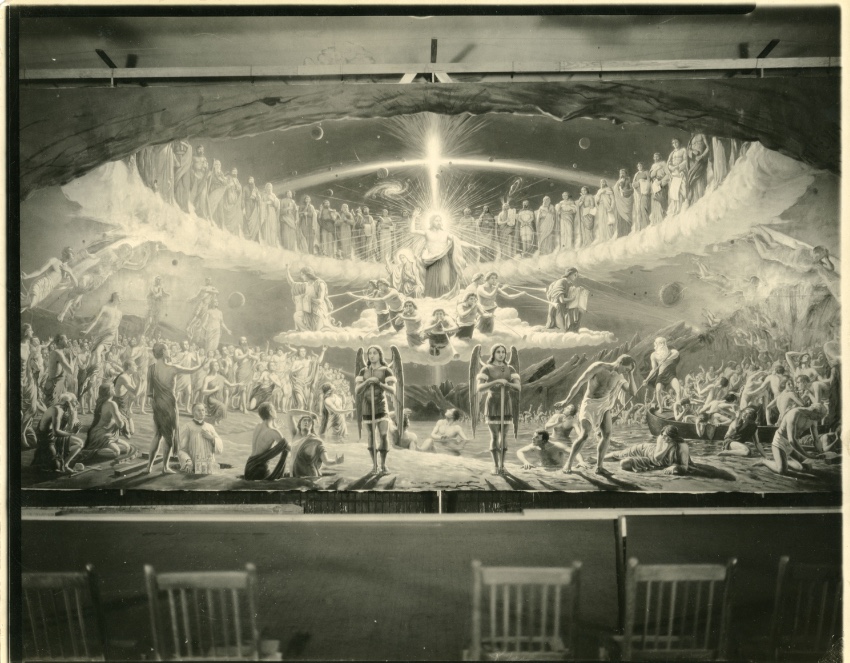
Complete mural of the Judgement in the artist's studio
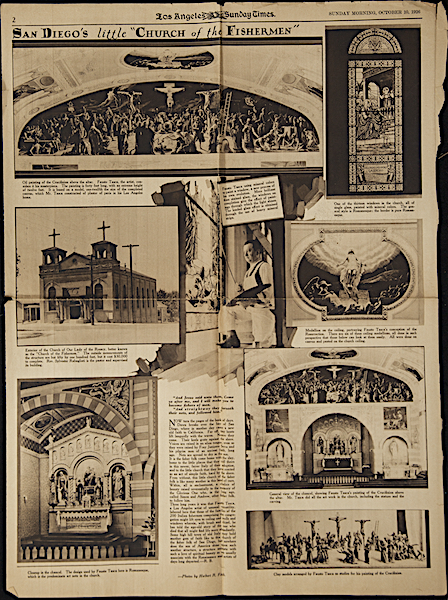
Los Angeles Sunday Times
Archive of the Tasca Estae

Article from The Southern Cross, January 8, 1926
Archive of the Tasca Estae
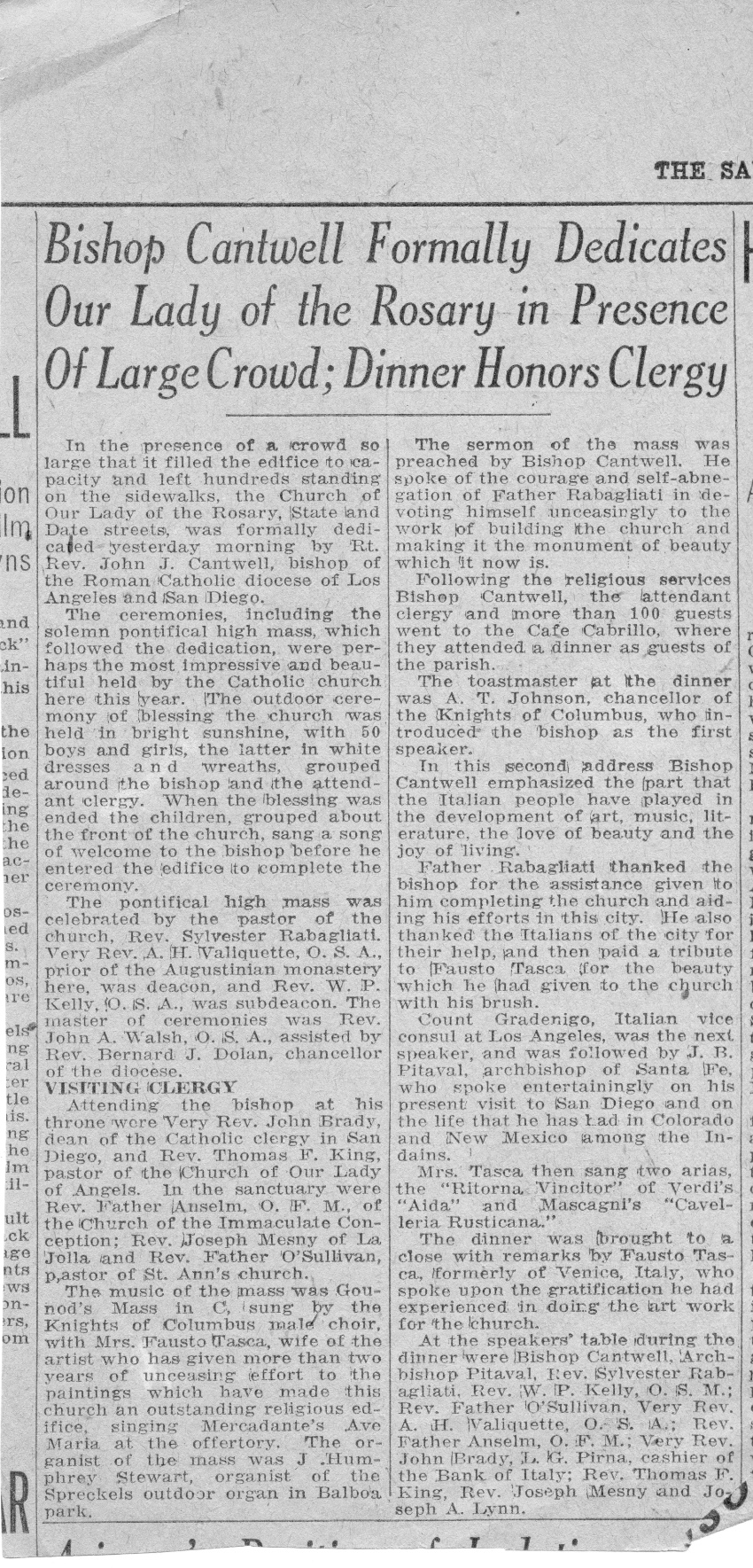
Dedication newspaper clipping
Newspaper unknown
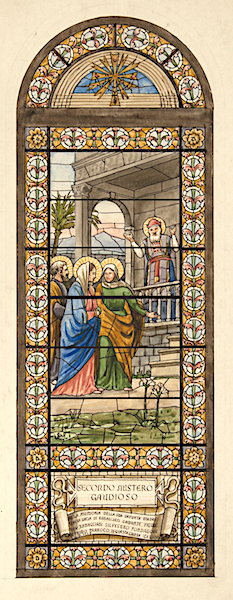
Stained glass window design
Watercolor on paper
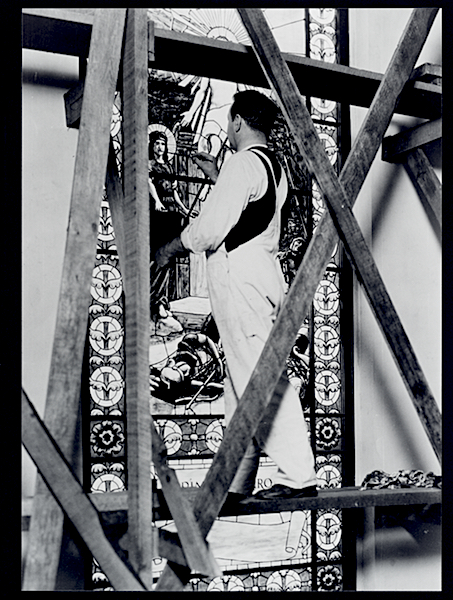
Fausto painting windows
Our Lady of the Rosary Church
The well-known sculptor and close friend of Fausto, Carlo Romanelli, received the commission to sculpt statues of the Sacred Heart and the Blessed Virgin. Fausto painted both statues in a realistic style. The two statues occupy niches to the left and right of the main altar.
All the large paintings for Our Lady of the Rosary were completed in Fausto’s Los Angeles studio. The two murals, The Crucifixion and The Last Judgment, were painted on huge sheets of canvas. When all the paintings were complete, Fausto transported them by train from Los Angeles to San Diego, and installed them in the church using a special glue, suited to the dry climate of California, to apply the canvas to the stucco walls of the church.
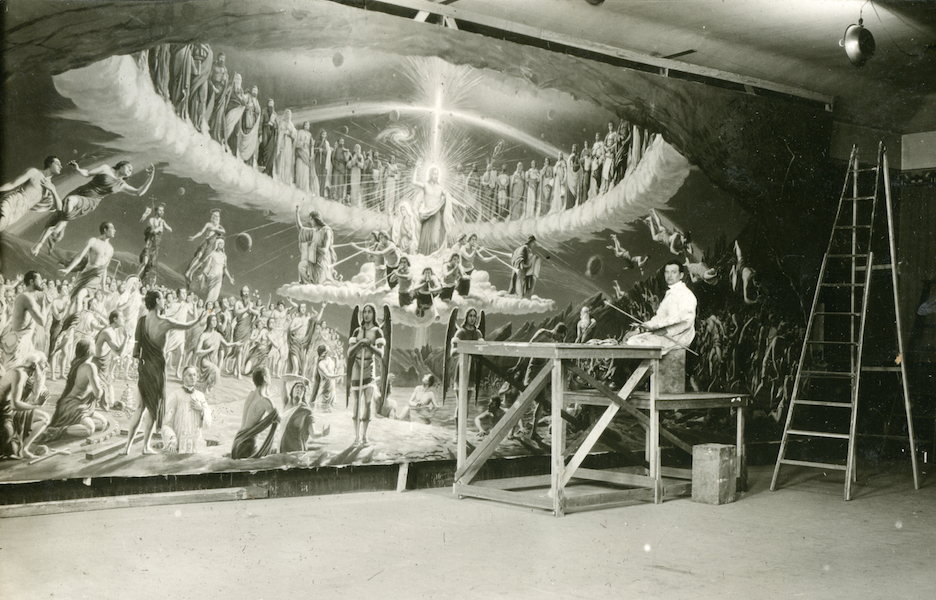
Fausto's studio was located on a top floor of 107-1/2 Main Street in Los Angeles.
It afforded him excellent light for painting, and the ample space required for
the execution of huge murals. At the lower left of the painting, we can see
Fausto's portrait of Father Rabagliati
and the miniature of Our Lady of the Rosary.
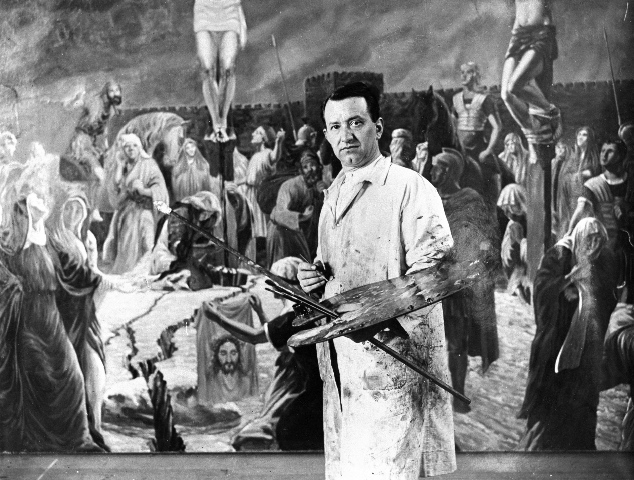
Fausto, at work in his studio
Crucifixion mural
A written history of the first 90 years of Our Lady of the Rosary can be found on the parish website. Father Rabagliati's intention for the Church's artwork:
The structure in place, there now remained the work of completing the interior of the church. Father Rabagliati was hopeful of finding the finest artists available to do the religious interior décor so that his church would be in keeping with the artistic traditions of the churches in Italy. Sensitive to the needs of his people, he realized how important it was to create a familiar environment for them in this new land. It was his hope that, with this feeling of “home,” there would also be a renewal of their Faith and love of God. Father Rabagliati’s design for the interior would be one that would be appreciated not only for its aesthetic appeal, but far more importantly, as a spiritual aid in lifting the thoughts of men to prayerful reflection on the teachings of the Faith. To accomplish this work, Rabagliati contacted a famous Venetian painter, Fausto Tasca, then living in southern California, as well as a renowned Italian sculptor, Carlo Romanelli.
In 2010, a brief documentary of the church was created, highlighting its history and describing the artwork.
Our Lady of the Rosary Church remains a beloved landmark in the community. In 2020, and extensive restoration was undertaken to restore and repair the church and its well-known artwork. Local TV station KUSI broadcast three short videos documenting the restoration, each featuring as host interior designer, Joan Peters.
To watch the KUSI videos, click the links. Preserving the Past, Restoring the Paintings, How Restoration Benefits for the Community.